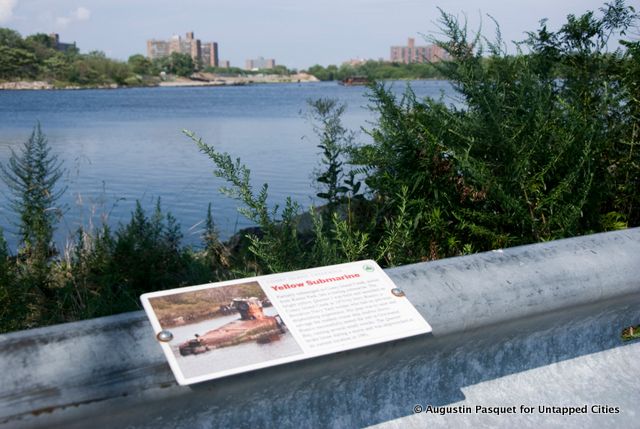The Lost Art Colony of Greenwich, Connecticut
Find out how you can visit the picturesque site that attracted artists and writers from NYC!


The eerie mast of the Quester I peeks out of the creek’s still waters even at high tide.
The sheer number of abandoned boats peeking out from the silted waters of Coney Island Creek piques the imagination. One sunken ship is an oddity, but the Creek’s collection of decaying boat fragments constitutes a true ship graveyard.
Coney Island Creek, really two sea inlets, is notable in part because it used to define Coney Island as an actual island. Before it was filled in, a portion of the Creek divided Coney Island from mainland Brooklyn. Now, it houses a ramshackle collection of at least nine burnt, half-sunken boats, a tragically surfaced dolphin corpse, and one curiously famous submarine.

A working boat navigates the waters around the crumbling remnants of Coney Island Creek’s abandoned ships.
Oddly, the ruins’ presence seems downright logical in some ways. Before the advent of affordable airline tickets, boats––like railroads––played a much more central role in transportation, simply because they were often the only option for traveling to your desired destination. The advent of other, faster transport methods rendered boats obsolete, and all things obsolete must be tossed somewhere.
But where do these particular discarded ships come from? When the Creek’s marinas began to close down in the fifties, they left an overwhelming number of extraneous boats. And before its criminalization in the 1970s, “scuttling”––deliberately sinking a ship by letting water flow into the hull––was de rigeur for people with boats who couldn’t (or didn’t want to) pay docking fees for a watercraft they could no longer use.
Is the ship graveyard likely to disappear anytime soon? Probably not. The U.S. Coast Guard reportedly sees the boats as “an eyesore,” but not an “actionable offense.” The Coast Guard’s protocol for abandoned boats has always been, essentially, to leave them as they are. The ruins simply don’t merit the money and energy necessary to remove them, especially when they haven’t been convincingly shown to interfere with boats currently in use or pollute the waters with oil or fuel leaks. In fact, removing the boats would pose the risk of releasing whatever toxins are lying dormant in the mud around them.
Despite some fishermen’s persistent worries about pollution, the boats have so far melded with the local ecosystem quite well. Abandoned boats may seem like an unwelcome human intrusion into the environment, but their very structure can work in the fauna’s favor. Small aquatic animals have begun using the structure for protection, and fish frequently spawn in and around the boats. Happily, there even seems to be some hope for the graveyard’s conversion into an artificial reef.

An informative plaque by the creek tells visitors of the story behind the Quester I’s remains.
And while some locals agree with the Coast Guard’s “eyesore” assessment of the ships, others have embraced them as a community hallmark. The wreckage, according to local fisherman Harry Delgado, is helpful in attracting fish. And of course, there’s something uniquely enticing about the mystery surrounding the creek’s submarine.
The Quester I––also known as the “Yellow Submarine” of Coney Island Creek––still looks like a hulking, 45-foot-long enigma. Popular theories include the notion that the Quester was originally a Civil War ironclad, but the truth is closer to home. The once–bright yellow submarine was built and launched on Coney Island Creek in 1970 by a Brooklyn Navy Yard welder named Jerry Bianco. The Quester was his first shipbuilding attempt. The Quester had raised several small wrecks in Gravesend Bay before it broke loose during a storm in 1981 and wrecked at its current location. The Quester’s original purpose, interestingly, was to find, raise, and salvage the Andrea Doria, a cruise ship which sank off Nantucket Island following a collision.
There’s no small irony in the story.
Read more from our Abandoned Series, including the abandoned boat graveyard at Staten Island, on Untapped Cities.
Subscribe to our newsletter